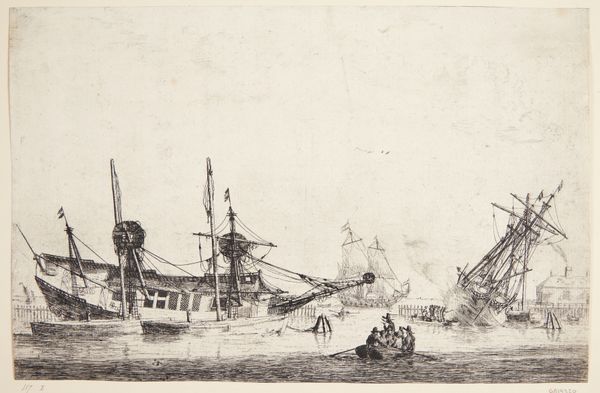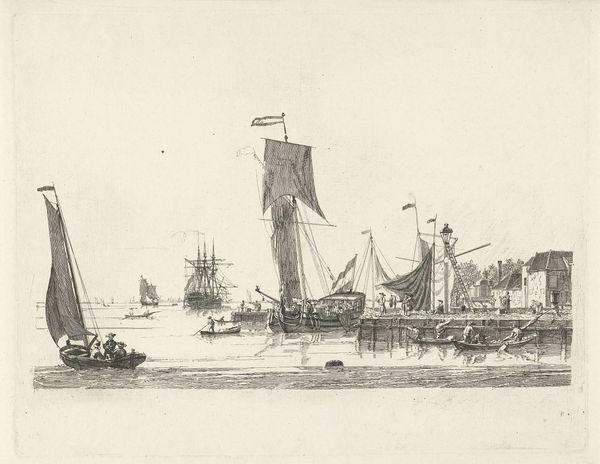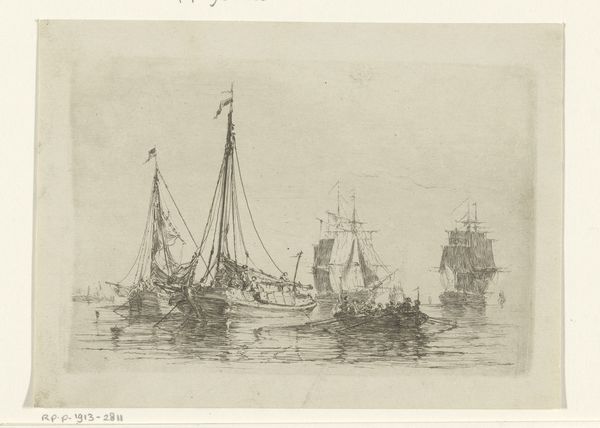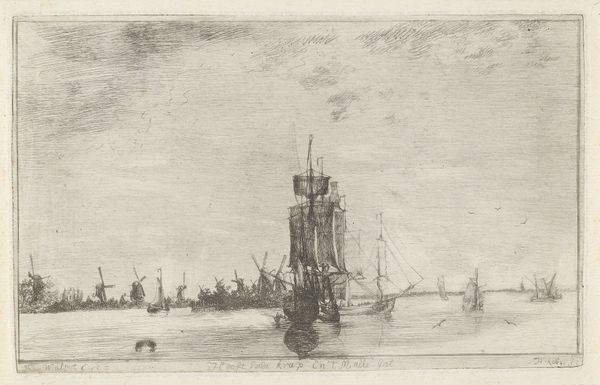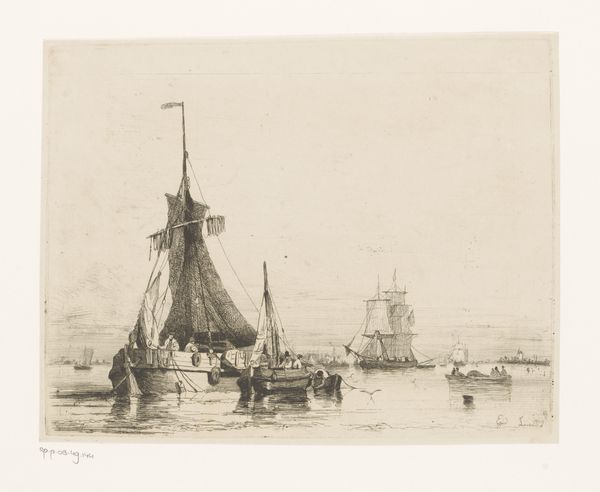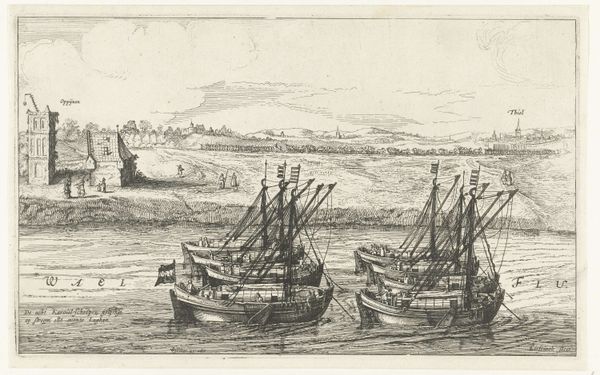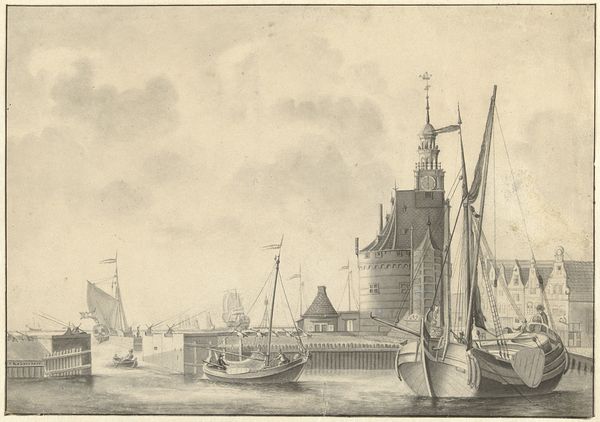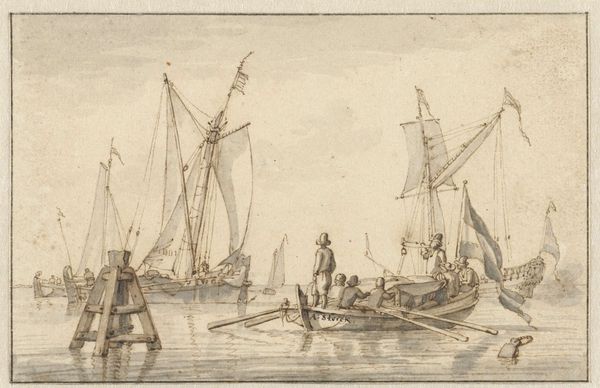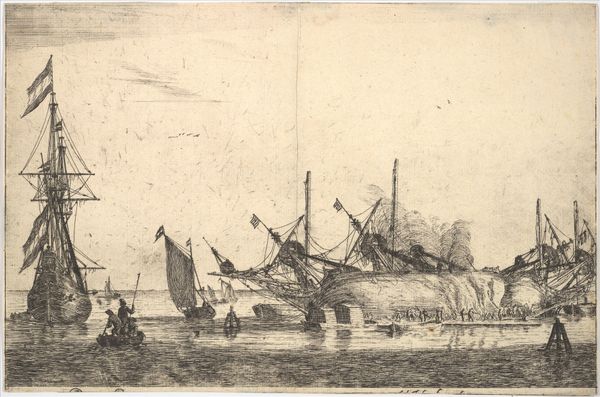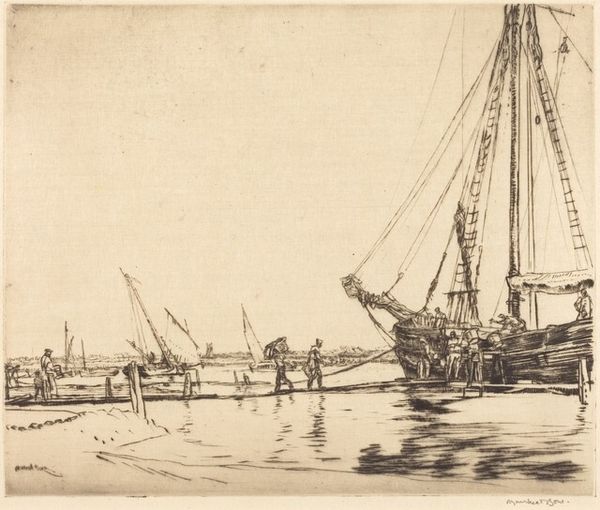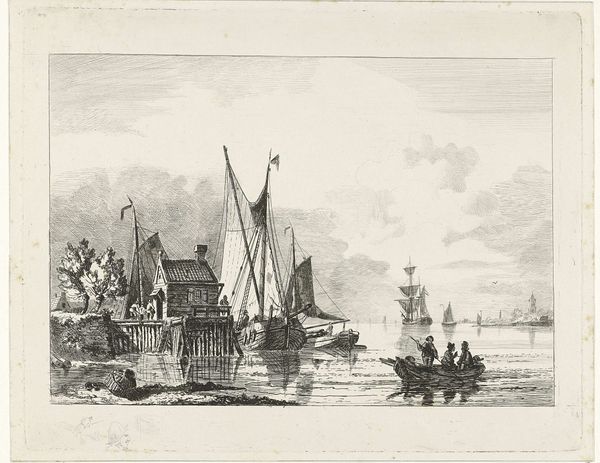
drawing, ink, pen
#
drawing
#
dutch-golden-age
#
landscape
#
ink
#
pen
#
cityscape
#
genre-painting
Dimensions: height 218 mm, width 277 mm
Copyright: Rijks Museum: Open Domain
Curator: Looking at this delicate ink drawing by Willem Gruyter Jr., "River View with Moored Sailing Ships," estimated to have been made between 1832 and 1880, I'm immediately struck by how effectively he captures the tranquil bustle of the harbor. What’s your impression? Editor: It feels surprisingly active despite its muted palette. The layering of line work definitely gives a sense of depth, of ships both near and far. It really gives weight to what I assume would be busy port trade. Curator: Absolutely. The artist provides an intriguing snapshot into 19th-century Dutch maritime life, doesn’t he? Note how the pen work delineates class distinctions, even—consider the figures disembarking onto what seems like a privately accessed pier alongside more commercial vessels, highlighting differing relations to water and transit at the time. Editor: And look closely at the materials. The fine ink lines make the wooden structures – the pier and boats– feel incredibly tactile, even grimy, like you could reach out and feel the salt air on the wood. There’s a real tension created by using such a delicate material like ink to portray hard labor and functional objects. Curator: Yes, I agree! Moreover, I wonder if we might also see in this focus on port life some of the burgeoning nationalistic sentiments tied up in trade and travel, where waterways functioned not merely for logistical or financial movement, but as cultural and symbolic arteries. Editor: The materiality of maritime trade extends beyond the wood, though. Look at the drawing's implied movement! I see this as a depiction of the global network dependent on these ships: ink traded to be used on paper produced for purchase, and labor enacted to transfer it. I wonder how the availability of these materials affected its creation, in essence. Curator: That is an astute point. It serves as a reminder that art isn't produced in a vacuum. Thinking about production in this way allows me to appreciate better the historical and economic conditions that framed artists’ lives, even seemingly pastoral scenes like these. Editor: Examining the physical realities of production and social systems really helps give depth to what may otherwise be overlooked about the everyday, especially its class relations and material costs. Curator: A thought-provoking lens for viewing this drawing, indeed! Editor: Well, the exercise provides a new level of access in considering a piece.
Comments
No comments
Be the first to comment and join the conversation on the ultimate creative platform.
